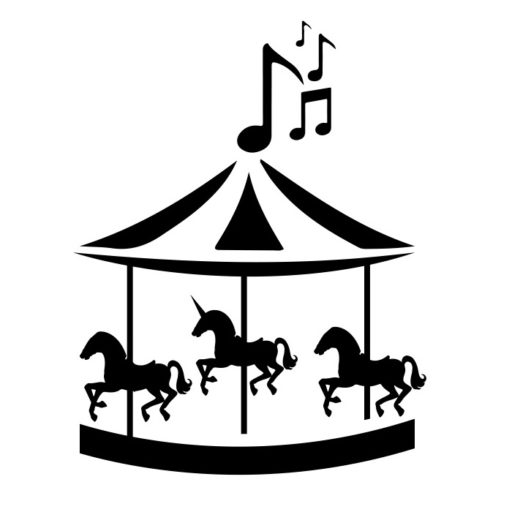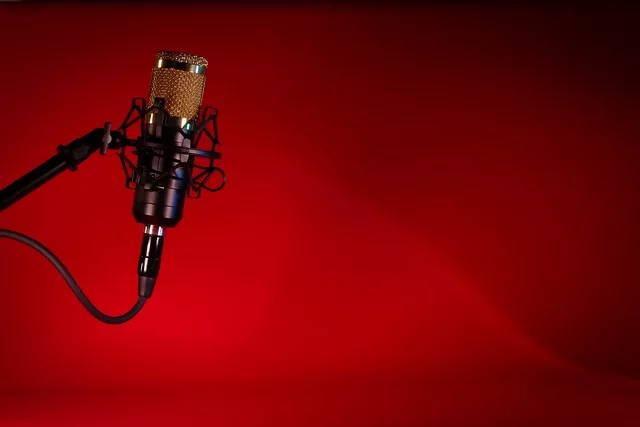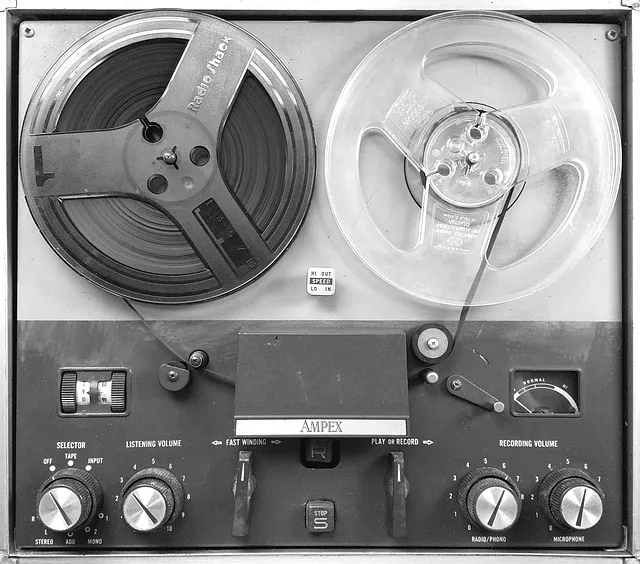DISCLAIMER: Parlor City Sound earns a commission (at no cost to you) if you click a link to Amazon and buy something while visiting this page. This is only applicable to Amazon links—we don't earn a sales commission from anyone else. Read our advertising disclosure & FAQ to learn more about our strict policies on affiliate marketing.
Recording studio microphones will make up a big chunk of most home studio budgets. They’re essential for capturing sound and have a very direct influence over the quality of that sound. And not just because of the quality of the microphones themselves, either.
A microphone is a device that captures audible sound waves and turns them into an electrical signal. Seems pretty straightforward, right? But there are several different types of recording studio microphones that pick up those sound waves in different ways. Each type of microphone has tasks it’s good or bad at.
Let’s learn about the different types of microphones and how they pick up sound in this guide from Parlor City Sound.
The basics of how recording studio microphones work

As useful as learning all of the scientific stuff is, we’re going to start with a brutally simple explanation of the basics of how microphones work.
Sound waves are created when a vibration sends waves of pressure away from its source. A person singing, a snare drum getting whacked, or a tree falling in the woods when nobody is around to hear it—they all create vibrating sound waves of pressure that radiate away from their source.
There’s a reason why in space, no one can hear you scream. There’s nothing in space to vibrate with sound waves. So in the cold vacuum of space, sound can’t travel at all. Meanwhile, here on Earth, sound waves vibrate particles in the air, and those vibrations ripple into the next particles, and so on.
The louder a sound is, the bigger its sound wave is and the further it can travel. For instance, a whisper likely won’t cross a larger room. But something really loud, like an explosion or a jackhammer or your mother-in-law’s ceaseless criticism, creates a huge sound wave and travels a lot further (sometimes unfortunately). The sound waves have more volume, and thus they’re louder and travel further.
Microphones have small vibrating diaphragms that are rattled by sound waves. Electrical coils pick up those vibrations and transform them into electrical signals. Those signals can then be heard through a speaker or captured on a recording.
By playing around with the electrical signals and how they pick up sound waves, various types of microphones have been invented that process sound waves in different ways. They also pick up sound waves in different patterns–general shapes around the microphone where they pick up sound, or don’t.
Dynamic microphones vs. condenser microphones
There are two primary types of recording studio microphones you’ll end up using. Dynamic and condenser microphones are similar, but generally serve different purposes.
Dynamic microphones use electromagnetism and transformers to work. Condenser microphones use variable capacitance instead of electromagnetism. Their coils vibrate over an electrically-charged backplate that essentially works like a sort of battery.
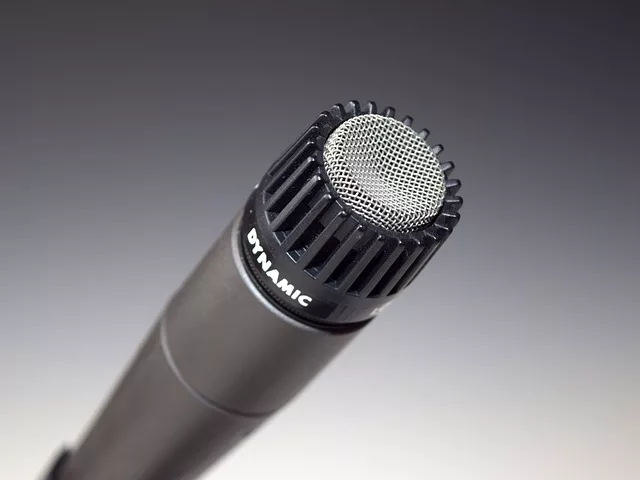
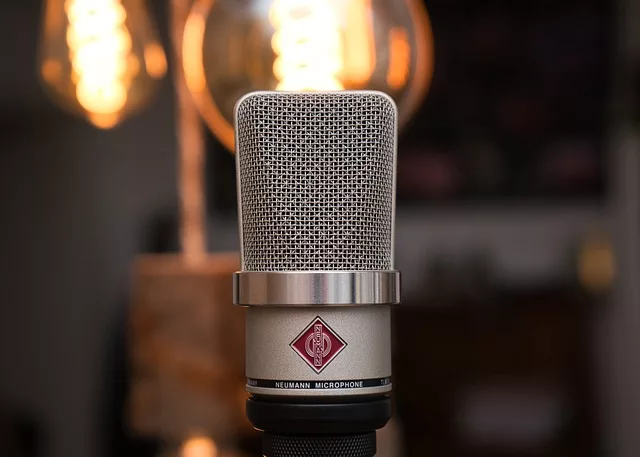
Both types of microphones need electricity to function, which is provided by a microphone preamp. But condenser microphones need special power—47 continuous volts of what’s called “phantom power”.
Dynamic microphones are tougher than condensers and more concerned with volume than quality. They’re great for loud sources like drums, horns, and guitar amps.
Condenser microphones are more delicate and their signals are a bit softer. They’re more focused on quality than volume, more accurately picking up every little nuance of the sound, but not usually handling louder volumes as cleanly.
Diaphragm sizes
Microphones (particularly condenser mics) also come with small, medium, or large diaphragms. And that can drastically change how they interpret sound waves and what frequencies of waves they pick up best.
Small diaphragms, which are usually less than half of an inch in diameter, handle higher frequencies and higher volumes better than larger ones. You’ll often see these “pencil” mics being used as drum overheads or on high hats, where you have higher frequency and volume levels but you want an accurate representation of the sound.
Large diaphragms, which are generally bigger than three-quarters of an inch, are better suited for lower and midrange frequencies. The added broadness makes them better at recording vocals and just about any musical instruments under the sun, apart from cymbals and other higher frequency, higher volumes sources.
More rarely you may also encounter self-proclaimed “medium diaphragm” mics. These often have diaphragms between half an inch and one inch, around three quarters of an inch in diameter. These mics are good for vocals and guitars, and really good on toms.
What are microphone polar patterns?
Now that we have a basic understanding of how microphones work and what makes them sound different, we can move on to the directions from which microphones pick up sound the best.
Microphones have polar patterns, which determine the directions from which the microphone picks up sound the strongest (and, of course, the weakest). Looking at a microphone’s polar pattern tells you which angles they get sound from the best, and where they tend to not get sound at all.
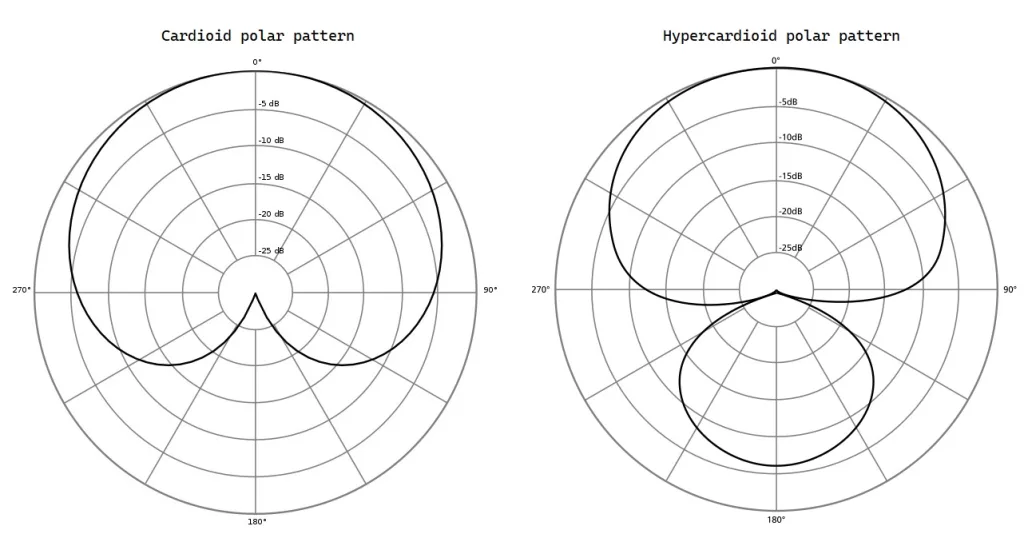
You’ll usually find a microphone’s polar patterns depicted on the box they came in, and sometimes shown right on the microphone itself. If not, you can search for the microphone’s polar pattern online from the manufacturer.
- Cardioid mics are the most common, especially with dynamic mics. Imagine a heart, where the mic’s diaphragm is in the middle. That’s a cardioid pattern. These mics pick up sound from the front (or the top), a bit less from the side, and way less or not at all from the back
- Supercardioid mics are a bit more focused on picking up sound from the front. They’ll usually also pick up a little from the back
- Hypercardioid mics are similar to supercardioid mics, but they pick up more in the back
- Omnidirectional mics pick up sound from all sides equally in one big circle
- Bidirectional mics, also known as figure eight mics, pick up from the front and back equally, and not from the sides
Other features to look for in recording studio microphones
Some microphones have other features that improve their functionality in different ways, so let’s take a quick look at some of those too.
- On/off switches can be found on some mics, especially dynamic mics. These are often used in live settings and allow you to quickly silence a mic when you don’t want it on.
- PAD (passive attenuation device) switches are usually found on higher-end condensers. These attenuate (a fancy word for “reduce”) the signal the microphone is sending to the preamp. This is useful when recording instruments and super loud or screamy singers
- High pass and low pass filters allow higher frequencies or lower frequencies to “pass” through to the preamp, while reducing the opposite signals. In other words, a high pass filter allows higher frequencies through but filters out the lower ones.
Which microphone accessories should you get?
That covers all of the basics of how microphones work and what features to look for. But what about all the other equipment that helps make microphones easier to use? Let’s close on these items!
First, the obvious: mic stands are pretty straightforward. You can find them straight, with arms, and with telescoping arms (meaning they have a smaller internal arm that can slide out of the bigger one). You might want to invest in one or more low-profile stands, too, which are useful for miking kick drums and guitar amps/ cabs, and anything else that sits low to the floor.
Pop filters are used to prevent plosives from hitting the mic. A plosive is a burst of air generated by hard “P” and “T” sounds. That awful, almost spitty sound you make when you say those letters? They sound even worse on a microphone. Get your singer a pop filter for sure!
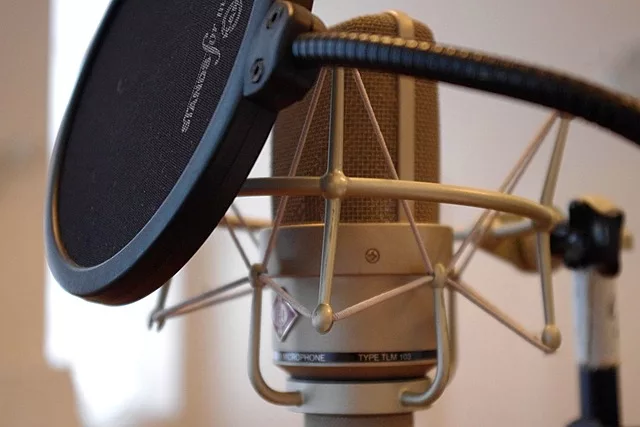
XLR cables, also known simply as “microphone cables,” connect the mic to a preamp, mixer, etc. Don’t worry about buying the most expensive mic cables around. Mogami Gold cables are fantastic when you’re running a $1000 microphone into a top flight preamp, but won’t offer any distinct value when your gear is low-range or mid-range.
We hope you found this guide on recording studio microphones useful. And please check out more free content from Parlor City Sound, too! We’re here to help you on your musical journey however we can!
